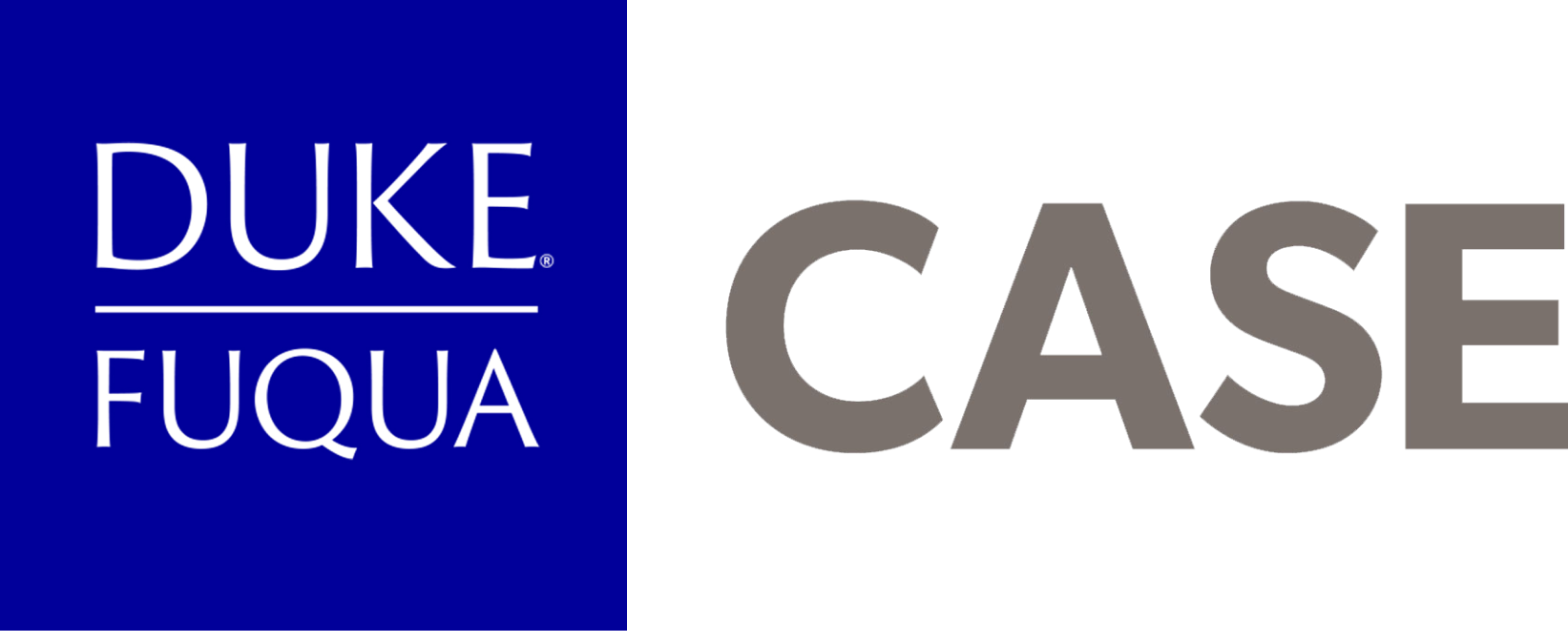This post originally appeared on Southern New Hampshire University’s Be a Social Entrepreneur blog in April 2013.
J. Gregory Dees has been the recipient of the Ashoka and Aspen Institute Lifetime Achievement Award in Social Entrepreneurship and continues to share his knowledge in the classroom and the world.
How did you get started in social entrepreneurship?
I was drawn into social entrepreneurship way back in 1986 when I was teaching at the Yale School of Management. At that time, the school covered business, nonprofit, and government all in one program. I was asked to develop and teach a new course on New Ventures. Naturally, given the scope of the program, I had to include all kinds of new ventures: nonprofits, for-profits, cooperatives, and hybrid structures. The students had to develop business plans, and many of them developed ventures with some kind of social mission in education, health care, the environment or poverty alleviation. This was before the term “social entrepreneurship” was widely embraced, but that is what many of them were doing. I thought it was fascinating. I was gripped by the distinctive challenges of achieving social impact and making the economics work. I was also hooked by the passion of the students.
Did your interest spark from any certain experience related to the field?
My interest pre-dated the course. It went back to my years at McKinsey when I met Dick Cavanagh, a partner in the D.C. office, who introduced me to the work of his good friend Bill Drayton. Bill had worked at McKinsey as one step on his fascinating career path, before creating Ashoka: Innovators for the Public around 1980. Bill is truly the father of this movement, at least in the U.S. (Michael Young was pushing similar ideas in the U.K.). Bill was starting to promote the idea of social entrepreneurship. Dick introduced me to Bill’s work, because he knew I was concerned to find out how we could use our business and management knowledge to find better solutions to social problems. My personal motivation came from seeing many social problems up close and personal as I grew up. Dick was a good mentor. I have followed Bill’s work ever since. It gave me a way of thinking about what some of my students were doing at Yale.
What aspect of social entrepreneurship interests you the most and why?
I am most intrigued by three things: the innovation process, the development of business models to support the innovation, and the process of scaling the impact of successful innovations. How do social entrepreneurs create new ways to tackle social problems—ways that are sufficiently better than what exists to justify switching? How can we help them be more effective at doing that? Clever ideas are a-dime-a-dozen, but truly worthwhile ideas, ones that are worth the costs of adoption, are precious.
When social entrepreneurs have an innovative idea, how do they develop a business model that both provides economic support and is aligned with achieving optimal social impact? Business models can lower the costs of adoption, but if they are not aligned, they can undermine the social impact, even when they are financially sound. We find that social entrepreneurs are constantly tweaking their business models looking for the right balance. It is not easy.
Finally, I am intrigued by the challenge of scaling impact. It is common to ask: How can social entrepreneurs scale their successful innovations? I would reframe the question: How can societies take better advantage of the successful innovations of social entrepreneurs. The onus should not only be on the social entrepreneurs. If their effective innovations do not scale, it is society’s loss. We should be asking what can be done to facilitate this process. How can we harvest the benefits of their work?
What’s the biggest challenge of teaching social entrepreneurship?
There are a couple of challenges I’d like to mention. The first is getting past all the definitional debates. There are many. I have written about the definition of social entrepreneurship (read here), but frankly, I am not too wed to a particular definition. This work should not be about definitions; it should be about action. It should be about crafting worthwhile innovative solutions to social or environmental problems. Yes, we need some boundaries for our courses; so I insist on one. I only include ventures that measure their success by their social impact, and make strategic decisions accordingly. Other organizations do in fact achieve great positive social impact without aiming for it or measuring it, that is terrific, but they do not face the same challenges as those who aim to achieve it, who need to measure it, who want to optimize it.
The other challenge is making sure we (students and faculty) treat the subject rigorously. This is not about feeling good. It is not even about “doing good” in the traditional sense of well-intentioned action. It is not about being cool or politically correct. It is about smart choices for achieving lasting, positive, worthwhile impact on serious problems. It is about using our scarce resources wisely. We have to be willing not just to “speak truth to power,” but we have to “speak hard truth to virtue, passion, and sacrifice,” which can be even harder, but is just as important. Virtue, passion, and sacrifice are not enough. Good intentions and hard work sometimes get it wrong. We have to be able to honor the effort and still say “What you are doing, no matter how well intentioned, is not effective, not a good use of resources.” Rigor is hard when passions are high.
[Editor’s note: To learn more about Professor Dees’s thoughts on teaching social entrepreneurship, read “Reflections and Insights on Teaching Social Entrepreneurship.”]
How did you become involved in the editing of “Enterprising Nonprofits and Strategic Tools for Social Entrepreneurs?”
Those two books were stimulated by the Ewing Marion Kauffman Foundation. I had been working with Kauffman on social entrepreneurship, and they decided that the field needed some resources. Initially, these were not designed as textbooks; they were meant for practitioners, particularly in the nonprofit sector, who wanted to be more entrepreneurial. I immediately recruited my friend Jed Emerson. I was teaching at Stanford at the time and Jed was running REDF in San Francisco, just up the road. We then found Peter Economy, a Stanford grad who had written or edited several business books. That created the team. The next step was to design the contents and find chapter authors who would bring a diversity of expertise. It was a fascinating process, with lots of editorial back and forth. Originally we thought all this material might fit into one book, but it was too much, so we created two. I have been pleased to see that the books have had staying power.
What was the inspiration for your new book?
I am currently working on a book about how social entrepreneurship fits in society as a whole and how different players in society can help maximize the benefits we get from the activities of social entrepreneurs. The core question is: How do we create a truly adaptive, entrepreneurial society that is responsive to ever changing and challenging social problems? However, I have to admit, sometimes I think the field may not need another book, but might be better served by something more multi-media—online videos (maybe a course), a website with interactive graphics, and so on. I am playing over the options now. I want to create something that will make a difference. Producing a book just to have another book is not smart. The big question is: How will that book achieve an impact? Whatever I do should always be viewed through that lens.
Have you seen any changes over the past decade in regards to social enterprises? If so, what are they and what do you think caused them?
There have been many changes. Let me mention just two very different ones. One of the changes has been the emergence of new legal forms of organization, such as the Benefit Corporation, the Low-profit, Limited Liability Company (L3C), the Flexible Purpose Corporation, and the Community Interest Company. The first three have been enacted by different states in the United States, and the last one was created in the United Kingdom. These emerged as social entrepreneurs struggled to find the right legal form to combine their social missions and their business models. Somehow traditional nonprofit and corporate legal structures were lacking. Beyond these new legal forms, we have also seen the rise of the “Certified B-Corporation,” B-Corp for short, which is a designation that a company can achieve by meeting certification standards of B Lab. These standards have to do, for instance, with changing the corporate charter to allow management and the board to consider the interests of multiple stakeholders, not just stockholders in making strategic decisions. B-Corp is not a new legal form, but can sometimes be accomplished by amending articles of incorporation within an existing legal structure. However, this was also driven by the desire for greater flexibility to serve social objectives in addition to economic ones.
The second change has been the recognition that often a lone social entrepreneur with an innovation is not enough to spur significant social change. That often requires collaborative action. In many cases, even for an innovation to get widespread acceptance, it needs to be supported by a change in laws, norms, or some system that will open the door for a shift in behavior. Also, many social problems are multi-sided and need to be approached from several different directions at once. If you are trying to promote economic development in a region and you start by improving the educational system, you are likely to simply create lots of outward migration, as educated people leave for jobs elsewhere. Unless you can create jobs locally for the people you educate, that new regional asset will simply leave the region. But bringing in jobs without an educated workforce to fill the jobs is also unlikely to work. So, we are seeing more focus on collaborative impact, network approaches and strategic alliances.
Are you personally involved in any social enterprises?
My only role now is as an advisor and consultant. Formally, I am on the board of the Bridgespan Group, and on several advisory boards, including REDF, Volans, the Limmat Foundation, and Management Leadership for Tomorrow. However, I also informally advise various social entrepreneurs on their ventures, and I work with social entrepreneurs through our programs at Duke. For instance, we are just starting the Social Entrepreneurship Accelerator at Duke (SEAD), which will be initially focused on helping to scale innovations in global health. A cohort of sixteen innovators will start the program this spring, and I expect to work with them closely as this project moves forward.

